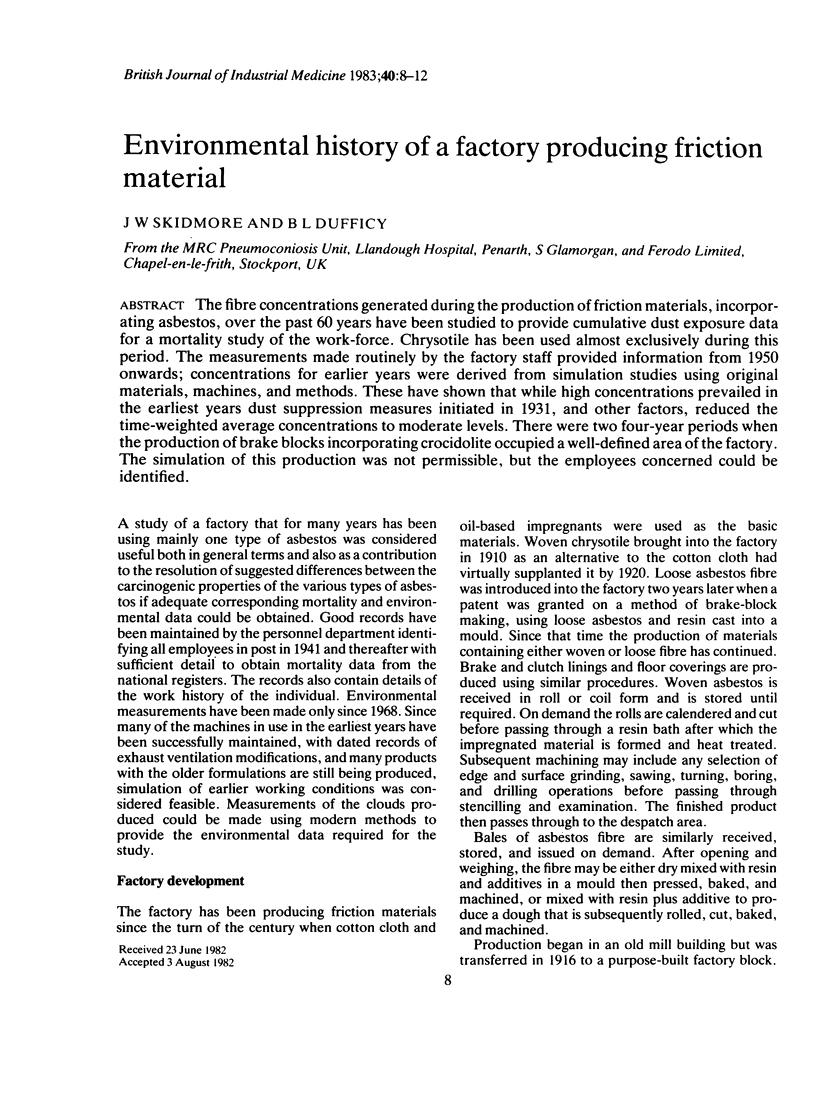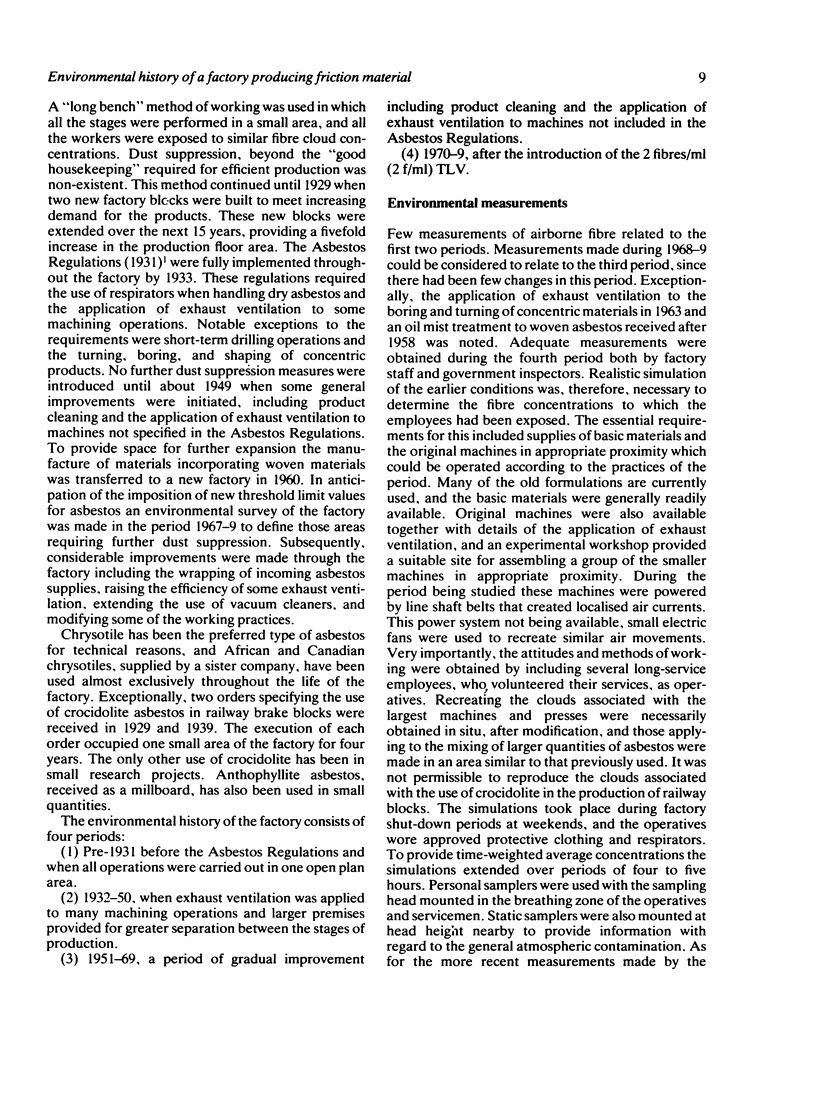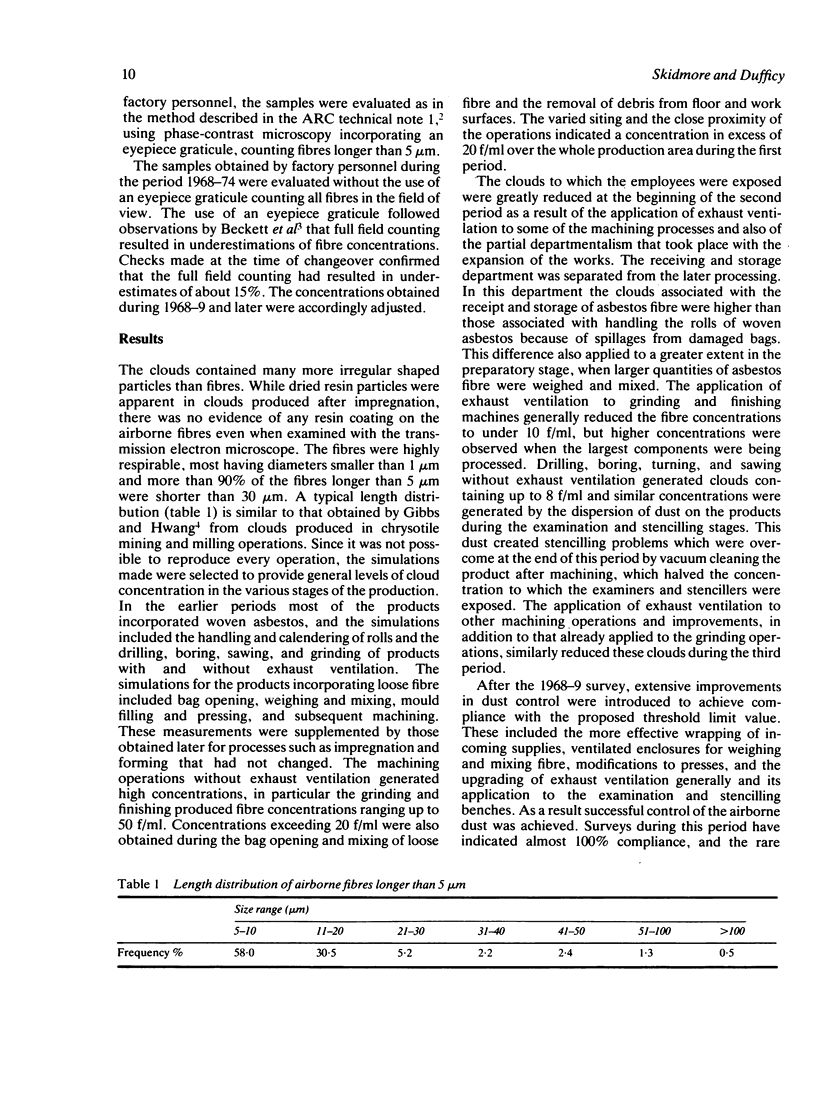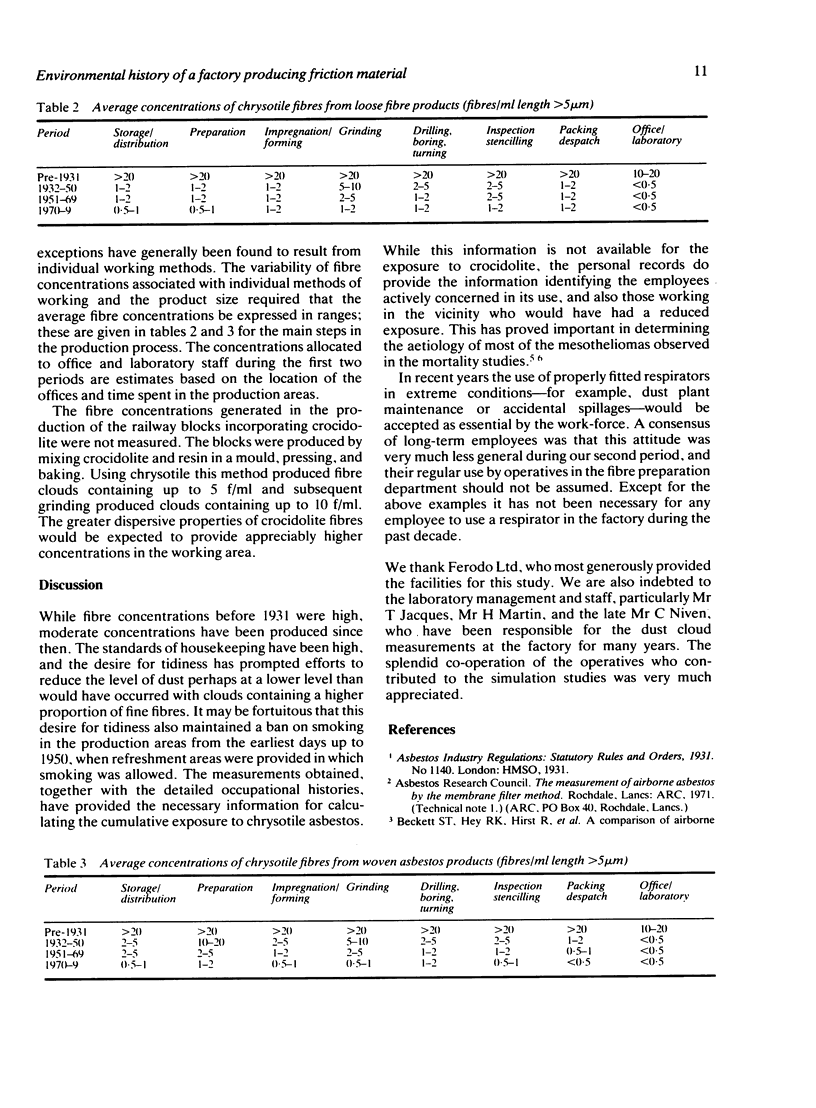Abstract
The fibre concentrations generated during the production of friction materials, incorporating asbestos, over the past 60 years have been studied to provide cumulative dust exposure data for a mortality study of the work-force. Chrysotile has been used almost exclusively during this period. The measurements made routinely by the factory staff provided information from 1950 onwards; concentrations for earlier years were derived from simulation studies using original materials, machines, and methods. These have shown that while high concentrations prevailed in the earliest years dust suppression measures initiated in 1931, and other factors, reduced the time-weighted average concentrations to moderate levels. There were two four-year periods when the production of brake blocks incorporating crocidolite occupied a well-defined area of the factory. The simulation of this production was not permissible, but the employees concerned could be identified.
Full text
PDF




Selected References
These references are in PubMed. This may not be the complete list of references from this article.
- Berry G., Newhouse M. L. Mortality of workers manufacturing friction materials using asbestos. Br J Ind Med. 1983 Feb;40(1):1–7. doi: 10.1136/oem.40.1.1. [DOI] [PMC free article] [PubMed] [Google Scholar]


